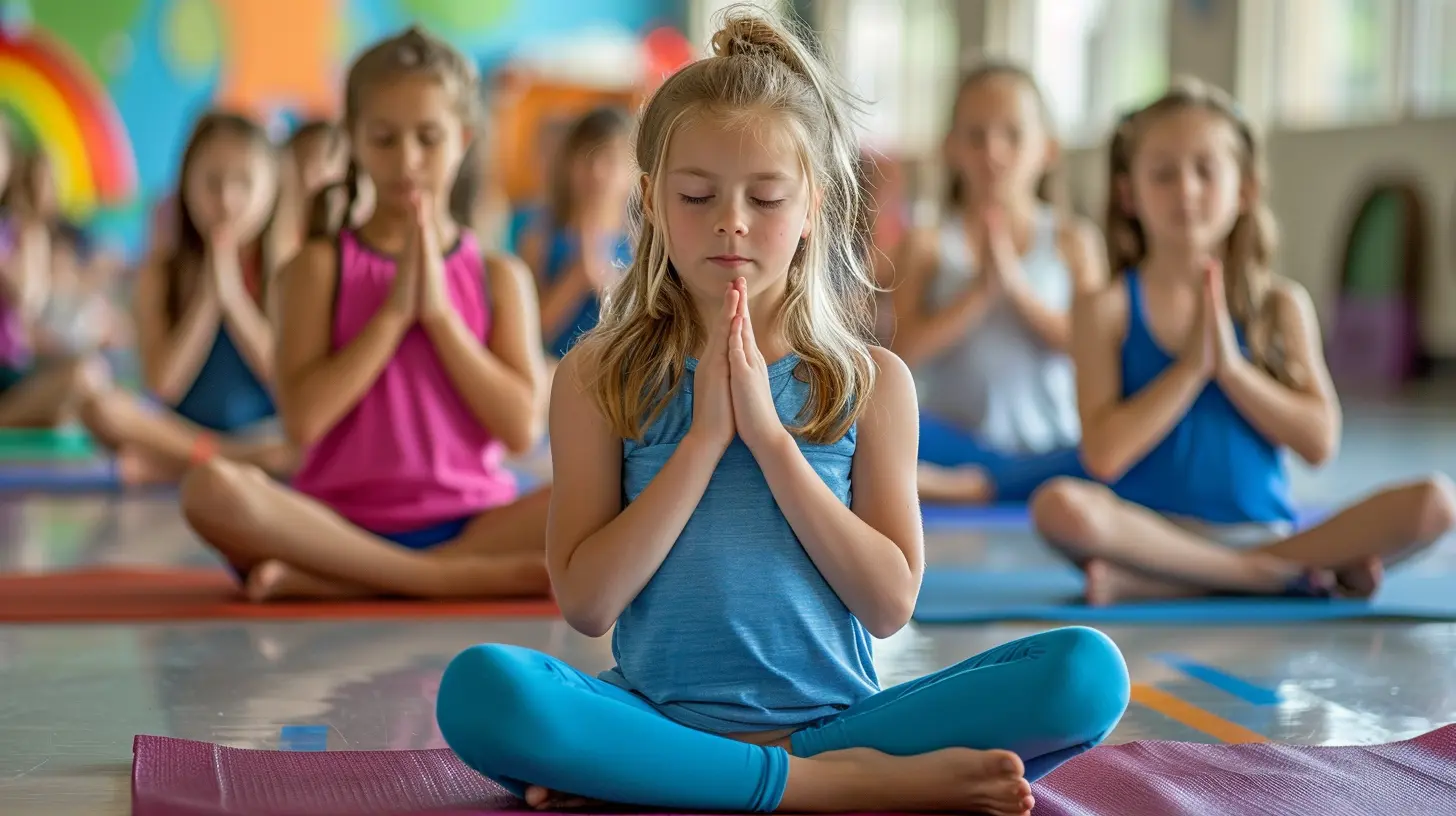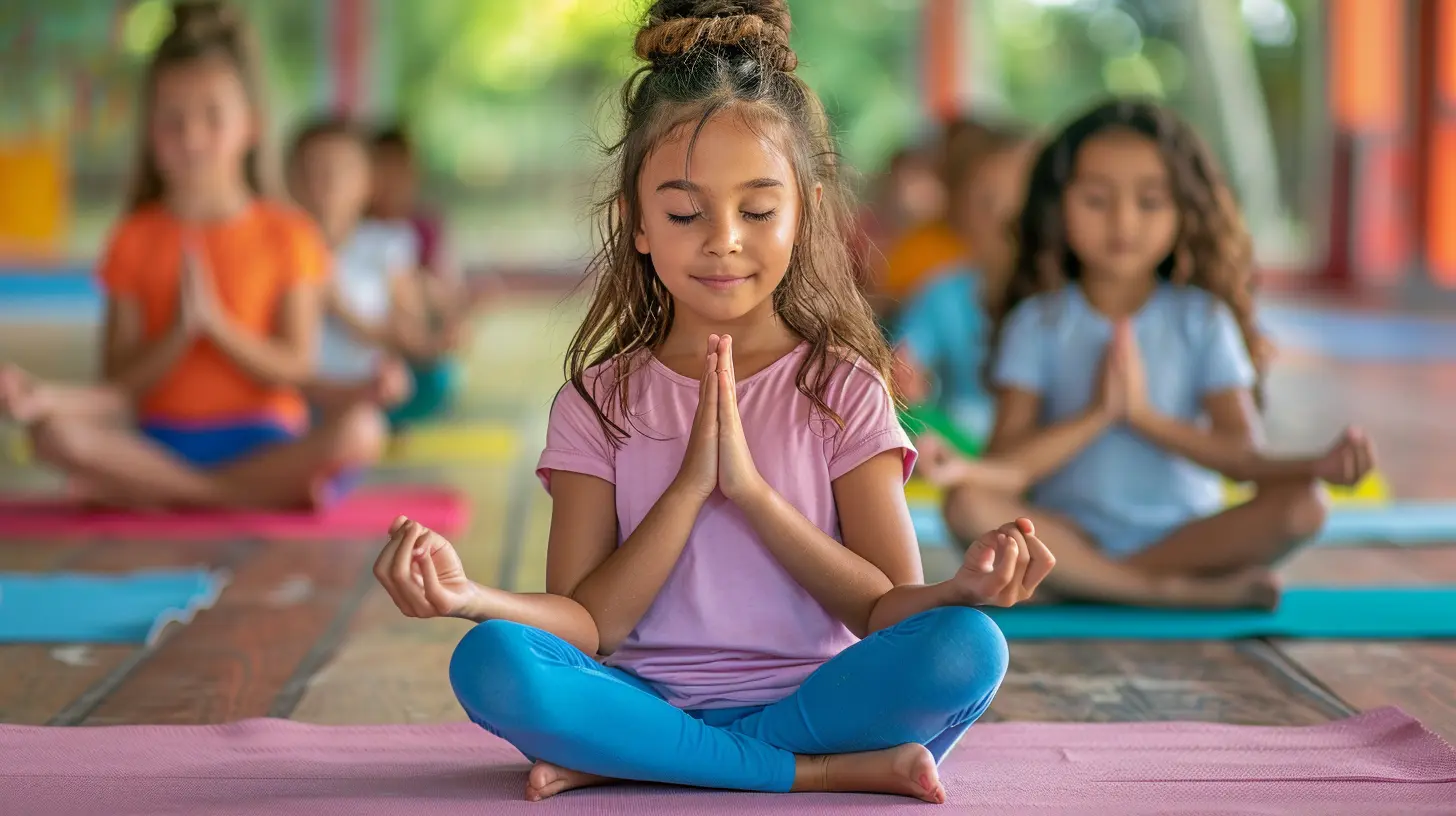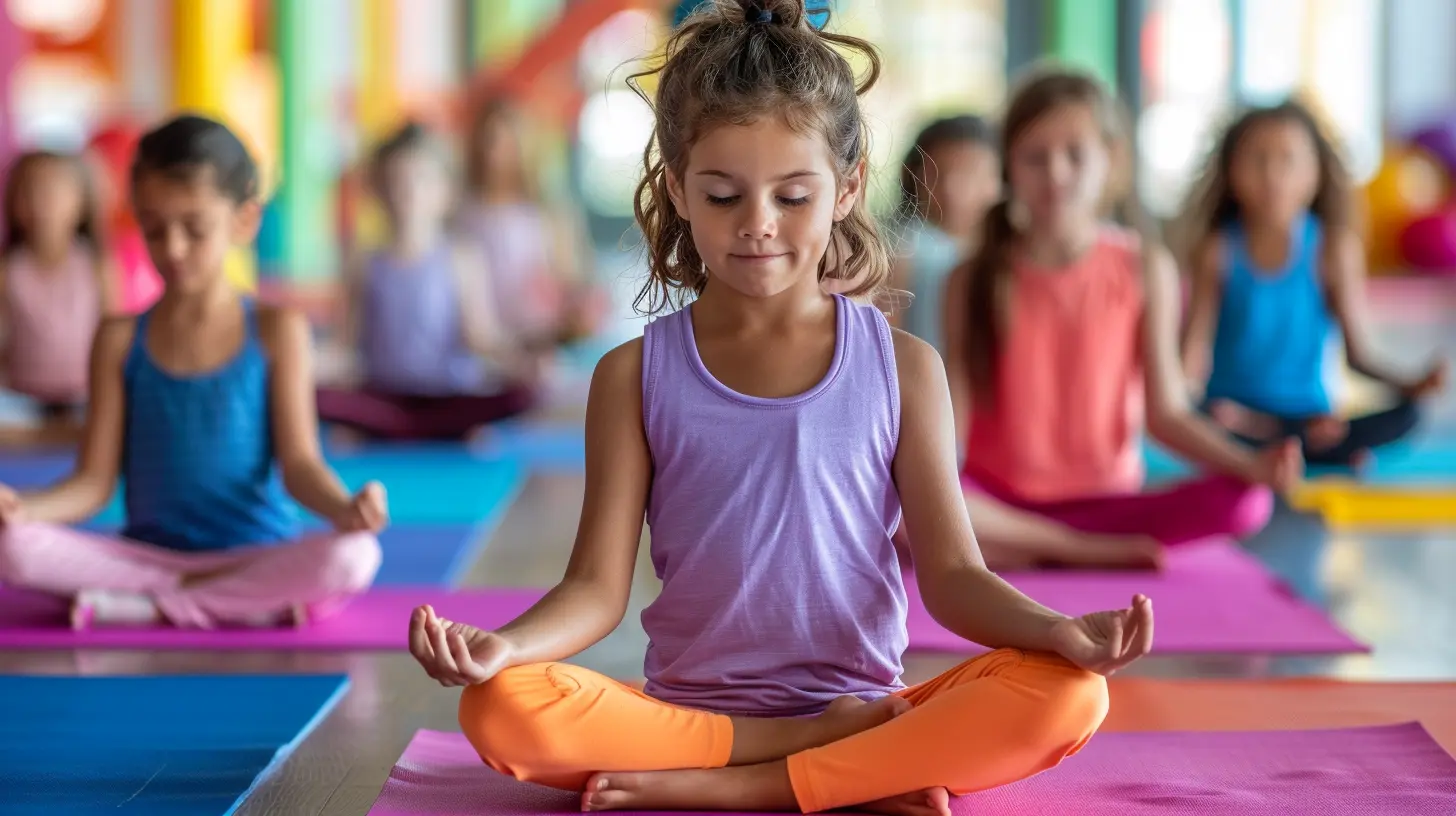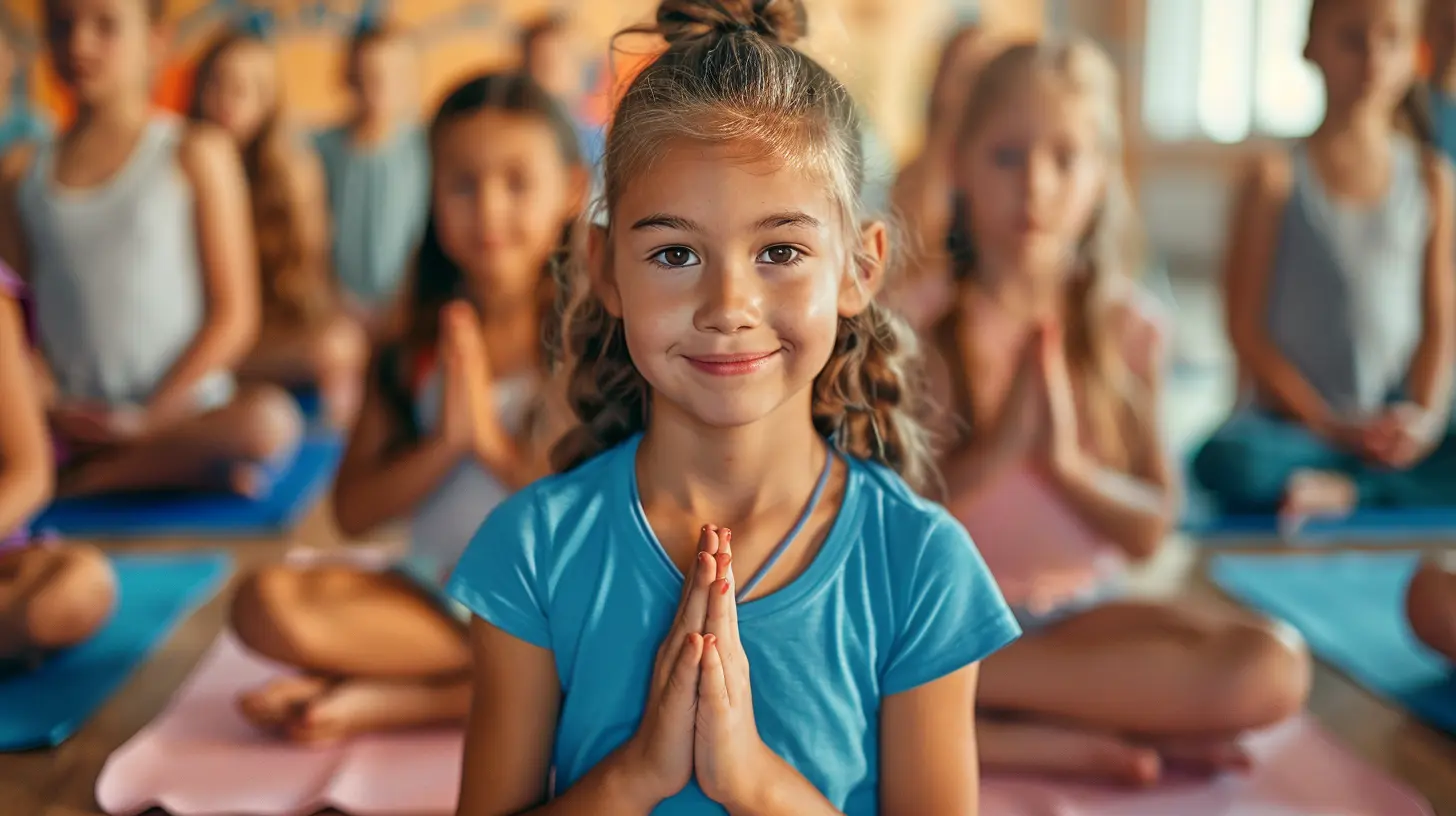Mindful Movement: Incorporating Yoga into PE Classes
29 May 2025
Physical Education (PE) has long been about pushing limits—running faster, jumping higher, and building endurance. But what if we told you that slowing down might be just as important as speeding up? Yoga, an ancient practice rooted in mindfulness and movement, is making waves in PE classes across the globe. And for good reason!
It’s time to rethink the traditional PE curriculum. Instead of only focusing on competitive sports and high-intensity workouts, we need to embrace mindful movement. Yoga isn’t just stretching; it’s a game-changer for physical and mental well-being. Let’s break it down.

Why Yoga Deserves a Place in PE Classes
Think about it—PE classes are often high-energy, with students running laps, chasing balls, and engaging in intense physical activities. But not every student thrives in that chaotic environment. Some struggle with anxiety, motor coordination, or the pressure of competition. That’s where yoga comes in.Yoga provides a balanced approach to physical education. It promotes flexibility, strength, balance, and, most importantly, mindfulness. Imagine a PE class where students aren’t just sweating but also learning how to breathe, focus, and relax. Sounds like a win-win, right?
The Physical Benefits of Yoga in PE
When we think of yoga, we often picture serene poses and deep breathing. But don’t be fooled—yoga is a serious workout that builds strength, endurance, and flexibility.- Improves Flexibility: Many kids struggle with stiff muscles due to sedentary lifestyles (hello, too much screen time!). Yoga helps stretch and lengthen tight muscles, reducing the risk of injuries.
- Builds Strength: Holding poses like Plank or Warrior II isn’t as easy as it looks. Yoga strengthens the core, arms, and legs—without the need for heavy weights.
- Enhances Balance and Coordination: Tree Pose, anyone? Yoga challenges students to control their bodies, improving balance and overall athletic performance.
- Reduces Risk of Injury: Unlike high-impact sports, yoga is gentle on the joints, making it an excellent option for students recovering from injuries or those who struggle with more intense physical activities.
The Mental and Emotional Perks
PE isn’t just about building strong bodies—it’s about fostering strong minds, too. Yoga has some incredible psychological benefits that can help students both in and outside the gym.- Reduces Stress and Anxiety: School can be overwhelming, with endless assignments, tests, and social pressures. Yoga teaches students how to use their breath to calm their minds, reducing stress and helping them stay focused.
- Boosts Self-Confidence: Not every student excels in traditional PE activities. Yoga is non-competitive, meaning there’s no pressure to "win." Everyone progresses at their own pace, helping build confidence.
- Improves Focus and Concentration: Ever heard of "monkey mind"? It’s that restless, distracted feeling we all experience. Yoga trains students to concentrate, improving attention span and academic performance.
- Encourages Mindfulness: In a world full of constant notifications, mindfulness is a superpower. Yoga teaches kids to be present, listen to their bodies, and manage their emotions.

How to Integrate Yoga into PE Classes
Now that we’ve established why yoga belongs in PE, let’s talk about how to incorporate it effectively. It’s not about replacing traditional sports but rather enhancing the curriculum with mindful movement.1. Start with Simple Poses
No need to jump straight into headstands! Begin with foundational yoga poses that are easy to follow and fun to practice.- Mountain Pose (Tadasana): Teaches posture and awareness.
- Downward Dog (Adho Mukha Svanasana): Stretches the whole body and builds strength.
- Warrior Poses: Boost confidence and stamina.
- Tree Pose (Vrksasana): A fun balancing challenge that improves focus.
2. Make It Fun and Interactive
Let’s be real—if yoga feels like a boring lecture, students will check out fast. Keep it engaging!- Turn It into a Game: Introduce "Yoga Simon Says" where students mimic poses.
- Create Story-Based Flows: Younger students love themed sequences, like a jungle adventure where they "become" animals using poses.
- Use Music: Play calming tunes or instrumental beats to set the right mood.
3. Encourage Mindful Breathing
Breathwork is the heart of yoga. Teach students how to use breathing techniques to calm their nervous systems and improve focus.- Belly Breathing: Helps with relaxation and stress relief.
- Box Breathing (4-4-4-4): A simple method to clear the mind before a test or big game.
- Lion’s Breath: A fun way to let go of nervous energy.
4. Keep Sessions Short and Sweet
Nobody expects a full 90-minute yoga session in PE. Start with 5- to 10-minute yoga breaks at the beginning or end of class. Even a short session can make a difference!5. Teach the Mind-Body Connection
Help students understand that yoga isn’t just about movement—it’s about connecting mind and body. Discuss concepts like:- Body Awareness: Recognizing tightness, fatigue, or stress and responding accordingly.
- Positive Thinking: Encouraging a healthy mindset through affirmations ("I am strong, I am focused").
- Stress Management: Showing how yoga can be a tool for handling emotions and challenges.

Overcoming Common Challenges
Like anything new, integrating yoga into PE might face some resistance. Here’s how to tackle common concerns:"Will students take it seriously?"
Yes, if it’s approached the right way! Set expectations and create an environment where yoga is treated as a valuable skill, not just a break from 'real' exercise."Some kids hate slow movement. What if they get bored?"
Not every yoga session has to be super slow. Integrate dynamic movements like Sun Salutations or Yoga Flow sequences to keep things engaging."I don’t know enough about yoga to teach it."
You don’t have to be a certified yoga instructor! Plenty of online resources, free lesson plans, and YouTube tutorials can help you get started. Or, invite a guest instructor to lead a few classes.
Final Thoughts: A New Era of PE
Gone are the days when PE was just about running laps and doing push-ups. The future of physical education is holistic—it nurtures the body, mind, and soul.By incorporating yoga into PE classes, we’re not just teaching kids how to stretch—we’re giving them a lifelong tool for stress relief, focus, and mental well-being. And in today’s fast-paced world, that might just be the most valuable lesson of all.
all images in this post were generated using AI tools
Category:
Physical EducationAuthor:

Olivia Lewis
Discussion
rate this article
3 comments
Elowis McGehee
This article sparks such curiosity! How can integrating yoga into PE classes enhance students' focus and emotional well-being? I'm eager to learn more about the benefits and practical strategies for implementation in schools!
June 3, 2025 at 11:12 AM

Olivia Lewis
Thank you for your enthusiasm! Integrating yoga into PE can enhance focus by promoting mindfulness and reducing stress, which fosters emotional well-being. Practical strategies include starting classes with short breathing exercises and incorporating yoga poses into warm-ups. I look forward to sharing more insights!
Emory McNaughton
Incorporating yoga into PE classes is a fantastic way to promote mindfulness and physical well-being. It encourages students to connect with their bodies and reduces stress. This holistic approach can enhance focus and overall engagement in physical education.
May 30, 2025 at 11:07 AM

Olivia Lewis
Thank you for your thoughtful comment! I completely agree that integrating yoga into PE classes fosters mindfulness and enhances overall well-being for students.
Oriana McPhail
Incorporating yoga into PE classes transcends physical fitness; it nurtures emotional intelligence and self-awareness. This mindful movement fosters resilience and focus in students, equipping them with invaluable life skills. By merging body and mind, we cultivate a generation that values holistic well-being and interconnectedness.
May 30, 2025 at 3:46 AM

Olivia Lewis
Thank you for highlighting the profound benefits of incorporating yoga into PE classes. I completely agree that it promotes not only physical fitness but also emotional intelligence and resilience, ultimately fostering a well-rounded approach to student well-being.



